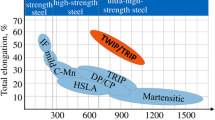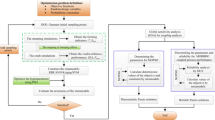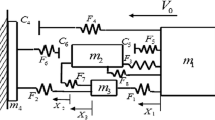Abstract
In recent years, the requirements on passive safety of cars have grown to high standards, leading to a permanent demand on an increase in simulation accuracy. Additionally, demands on fuel efficiency and CO2 – reduction are confronting the car body designers with the need of substantial weight reduction. Here the increasing use of high and ultrahigh strength steel grades for bodies in white can be identified as major trend. At the same time simulation techniques are urged to predict formability and crashworthiness performance better and better. The present contribution will focus on one of the most urging challenges in sheet metal forming and crashworthiness simulation for high strength steels, namely alternative or enhanced constitutive formulations to predict failure and cracking of the blank and furthermore the inclusion of forming results in crashworthiness finite element models in order to predict material failure in such numerical investigations. In a broader view this simulation process chain may be termed as ’producibility to serviceability’ since the diving force behind forming simulations used to be the question if a certain part can be produced on certain press equipment with a defined number of forming stages from a specific material of given initial thickness. Carrying over the forming results to other simulation disciplines like crashworthiness or NVH, where the serviceability of the designed structure is investigated further, will eventually give more insight into the effects of pre-straining and possible pre-damaging emerging from production processes on the target discipline. The whole topic is rather demanding since nowadays the crashworthiness of bodies in white is assessed to a major extend by finite element simulations without taking the production history into account. In this context, high strength steel qualities are known to be more problematic. The present contribution discusses two possible engineering driven approaches to close the constitutive gap between the forming and crashworthiness world.
Access this chapter
Tax calculation will be finalised at checkout
Purchases are for personal use only
Preview
Unable to display preview. Download preview PDF.
Similar content being viewed by others
References
Bridgman PW, (1952), Studies in Large Plastic Flow and Fracture,With Special Emphasis on the Effects of Hydrostatic Pressure, McGraw Hill Inc., New York.
Tvergaard V, Needleman A, (1984), Analysis of the Cup-Cone Fracture in a Round Tensile Bar. Archive of Mechanics 32, pp. 157–169.
Johnson GR, Cook WH, (1985), Fracture Characteristics of Three Metals Subjected to Various Strains, Strain Rates, Temperatures and Pressures. Eng. Fracture Mechanics 21, pp. 31–48.
Barlat F, Lege DJ, Brem JC, (1991), A Six-Component Yield Function for Anisotropic Materials, Int. Journal of Plasticity 7, pp. 693–712.
Müschenborn W, Sonne H-M, (1975), Influence of the Strain Path on the Forming Limits of Sheet Metal, Arch. Eisenhttenwesen 46(9), pp. 597–602.
Bai Y, Wierzbicki T, (2008,) Forming Severity Concept for Predicting Sheet Necking Under Complex Loading Histories, Int. Journal of Mechanical Sciences 50, pp. 1012–1022.
Weck A, Wilkinson DS, Toda H, Maire E, (2006), 2D and 3D Visualization of Ductile Fracture, Advanced Engineering Materials 8 (6), pp. 469–472.
Lemaitre J, (1985), A Continuous Damage Mechanics Model for Ductile Fracture, Journal of Engineering Materials and Technology 107, pp. 83–89.
De Borst R, Sluys L J,Mühlhaus H-B, Pamin J, (1993), Fundamental Issues in Finite Element Analyses of Localization of Deformation, Engineering Computations 10, pp. 99–121.
Schmeing F, Haufe A, Feucht M, (2007), Forming and Crash Induced Damage Evolution and Failure Prediction. Part I: Extension of the Gurson Model to Forming Simulations, 6th German LS-DYNA Forum H-I-01.
Acknowledgments
Part of this work was supported by funds of the project ‘WING’ by the German Federal Ministry of Education and Research (BMBF), grant # 03X0501E.
Author information
Authors and Affiliations
Corresponding author
Editor information
Editors and Affiliations
Rights and permissions
Copyright information
© 2009 Springer Science+Business Media, LLC
About this chapter
Cite this chapter
Haufe, A., Feucht, M., Neukamm, F. (2009). The Challenge to Predict Material Failure in Crashworthiness Applications: Simulation of Producibility to Serviceability. In: Hiermaier, S. (eds) Predictive Modeling of Dynamic Processes. Springer, Boston, MA. https://doi.org/10.1007/978-1-4419-0727-1_4
Download citation
DOI: https://doi.org/10.1007/978-1-4419-0727-1_4
Published:
Publisher Name: Springer, Boston, MA
Print ISBN: 978-1-4419-0726-4
Online ISBN: 978-1-4419-0727-1
eBook Packages: EngineeringEngineering (R0)




